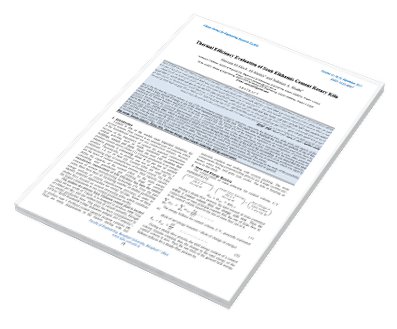Thermal Efficiency Evaluation of Souk Elkhamis Cement Rotary Kiln
DOI:
https://doi.org/10.37376/lyjer.v1i2.464Keywords:
Cement Industry, Rotary Kiln, Thermal Energy, Heat transfer modelling, Energy conservationAbstract
Due to the fact that the cement industry is one of the discouraging energy-intensive industries, especially the thermal ones, study areas and aspects of the use of such a large amount of energy is one of the most important priorities in this area. This paper aims to highlight the merits and methods of use of this energy and calculate the output distribution of the energy produced from the burning of fuel to determine the amounts of wasted and used from them by conducting the thermal balance of the process in the kiln. It created that only about 47% of the energy is exploited in the completion of processes and chemical reactions, and the remaining approximately 53% is considered wasted. Part of this thermal energy lost is instrumental in some other purposes necessary in this industry as processes of drying and calcining of raw material nutrients before they entering the kiln, and stimulate the burning process of fuel in the kiln, etc., and the other, which is estimated at about 8.6% lose through the outer surface of the kiln to the surrounding. It was found that the total thermal energy entering the kiln to produce one kilogram of clinker equivalent 3658.53 kJ\kg when the kiln worked in about 89% of its production capacity, at the time that the amount of specific thermal energy used and registered when the initial tests carried out at the beginning of operating, which was equal to 3367.64 kJ\kg when the kiln worked with a capacity above 100%. This refers to the increase of approximately 9% of the energy.
This paper recommends research into the causes of this increase of amount of heat consumption. It also recommends focusing on the study of the possibility to recovering this wasted energy, which found equal to 313.27 kJ\kg which is not an insignificant amount that can be neglected or ignored.
Downloads

Downloads
Published
How to Cite
Issue
Section
License
Copyright (c) 2021 Libyan Journal for Engineering Research

This work is licensed under a Creative Commons Attribution-NonCommercial-NoDerivatives 4.0 International License.






